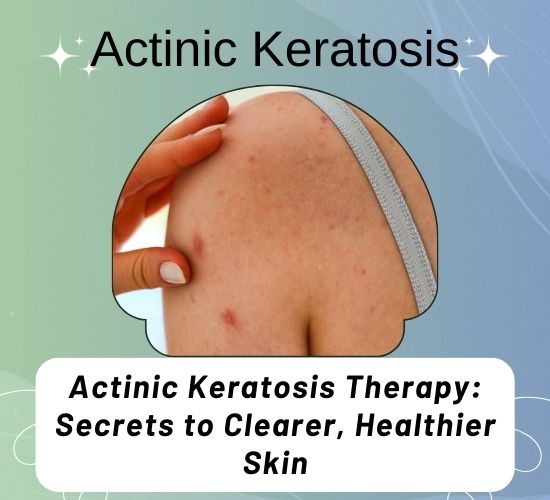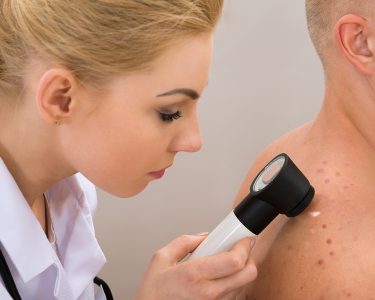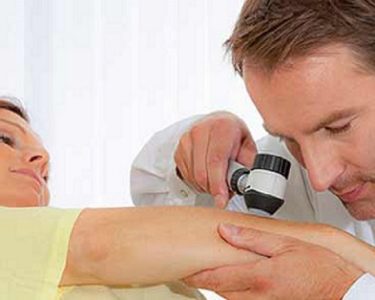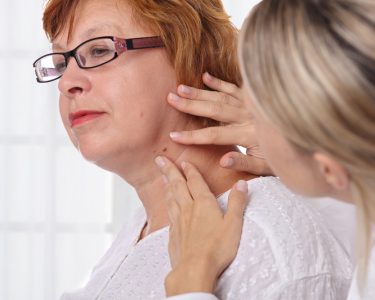Actinic keratosis (AK) is a common skin condition caused by prolonged exposure to ultraviolet (UV) radiation, leading to rough, scaly patches on the skin. Left untreated, AK can progress to squamous cell carcinoma, a type of skin cancer. However, with proper actinic keratosis therapy, you can manage the condition effectively and restore your skin’s health. This guide unveils the secrets to achieving clearer, healthier skin while addressing everything you need to know about AK therapy.
Actinic Keratosis
Actinic keratosis primarily affects areas frequently exposed to the sun, such as the face, ears, hands, and scalp. While the condition is more common in older adults and those with fair skin, anyone exposed to excessive sunlight is at risk.
Common symptoms of actinic keratosis include:
- Rough, sandpaper-like patches.
- Skin discoloration ranging from red to brown.
- Tenderness or itching in affected areas.
Effective Actinic Keratosis Therapies
The treatment for actinic keratosis focuses on removing the lesions and preventing recurrence. Here are the top options:
Related Articles: Most Effective Treatment for Actinic Keratosis
1. Topical Medications
Prescription creams and gels are often used to treat AK by stimulating the immune system or directly targeting abnormal cells.
- 5-Fluorouracil (5-FU): This cream destroys precancerous and cancerous cells, causing them to flake off.
- Imiquimod: Boosts the immune response to eliminate abnormal cells.
- Diclofenac Gel: Reduces inflammation while treating AK.
2. Cryotherapy
Cryotherapy involves freezing AK lesions with liquid nitrogen. This quick, in-office procedure causes the lesions to blister and peel off within days.
3. Photodynamic Therapy (PDT)
PDT combines a photosensitizing agent with a special light to target and destroy AK cells. This therapy is particularly effective for treating larger or multiple lesions.
4. Chemical Peels
Medical-grade chemical peels remove the outer layers of skin, encouraging new, healthy skin to regenerate.
Related Articles: Actinic Keratosis on the Eyelids: Protect Your Eyelids
5. Laser Therapy
Laser therapy precisely targets and removes damaged skin cells while promoting healing.
Lifestyle Changes for Clearer Skin
In addition to professional therapies, adopting skin-friendly habits can enhance treatment results and prevent future AK development.
1. Use Sunscreen Daily
UV protection is the cornerstone of AK prevention. Choose a broad-spectrum sunscreen with SPF 30 or higher and reapply every two hours.
Related Articles: 10 Actinic Keratosis Home Remedies and Natural Cure
2. Wear Protective Clothing
Hats, long sleeves, and sunglasses shield your skin from harmful UV rays.
3. Stay in the Shade
Avoid direct sun exposure, especially during peak hours (10 AM to 4 PM).
4. Regular Skin Checks
Monitor your skin for any changes or new lesions. Early detection is key to successful treatment.
Related Articles: Actinic Keratosis Medical Procedures: What You Need to Know
Natural Remedies for Actinic Keratosis
Actinic keratosis (AK) is a rough, scaly patch of skin caused by long-term sun exposure. While medical treatment is often necessary to prevent progression to squamous cell carcinoma, some Natural Remedies for Actinic keratosis may help alleviate symptoms, support skin health, or complement medical treatments. It’s essential to consult a dermatologist before trying any alternative approaches, especially if the condition is advanced.
Natural Remedies to Consider
- Green Tea Extract
- Contains polyphenols with antioxidant and anti-inflammatory properties.
- May help reduce AK lesions when applied topically. Look for creams containing EGCG (epigallocatechin gallate).
- Apple Cider Vinegar
- Used as a natural exfoliant and for its antimicrobial properties.
- Dilute with water (1:1 ratio) and apply to the affected area with a cotton ball. Test on a small area first to avoid irritation.
- Aloe Vera
- Known for its soothing, anti-inflammatory, and healing properties.
- Apply pure aloe vera gel directly to AK lesions to calm irritation.
- Coconut Oil
- Moisturizes and may support skin healing.
- Apply gently to dry, scaly patches to improve hydration.
- Essential Oils
- Tea Tree Oil: Antimicrobial and anti-inflammatory. Dilute with a carrier oil (e.g., coconut oil) before applying.
- Frankincense Oil: May promote healthy skin regeneration when used diluted.
- Curcumin (Turmeric)
- Has anti-inflammatory and antioxidant effects.
- Create a paste with turmeric powder and water and apply to the lesions, or consider taking turmeric supplements.
- Dietary Changes
- Increase intake of foods rich in antioxidants, such as fruits, vegetables, nuts, and seeds, to support skin repair and protect against further damage.
- Sun Protection
- Prevent further damage by wearing sunscreen (SPF 30 or higher), protective clothing, and avoiding peak sunlight hours.
- Vitamin E Oil
- Antioxidant that may help repair skin and reduce inflammation.
- Apply directly to AK patches or take supplements under a doctor’s guidance.
- Castor Oil
- Known for its soothing and emollient properties.
- Apply a thin layer to affected areas to soften rough patches.
Why Early Treatment Matters
Timely actinic keratosis therapy is crucial to preventing progression to skin cancer. Regular dermatologist visits and proactive treatment ensure that AK remains manageable and minimizes health risks.
Conclusion
Actinic keratosis therapy offers a variety of options to help you achieve clearer, healthier skin. From topical treatments and advanced procedures to lifestyle adjustments, managing AK is within reach. Consult your dermatologist to develop a personalized treatment plan and take the first step towards radiant skin today.




